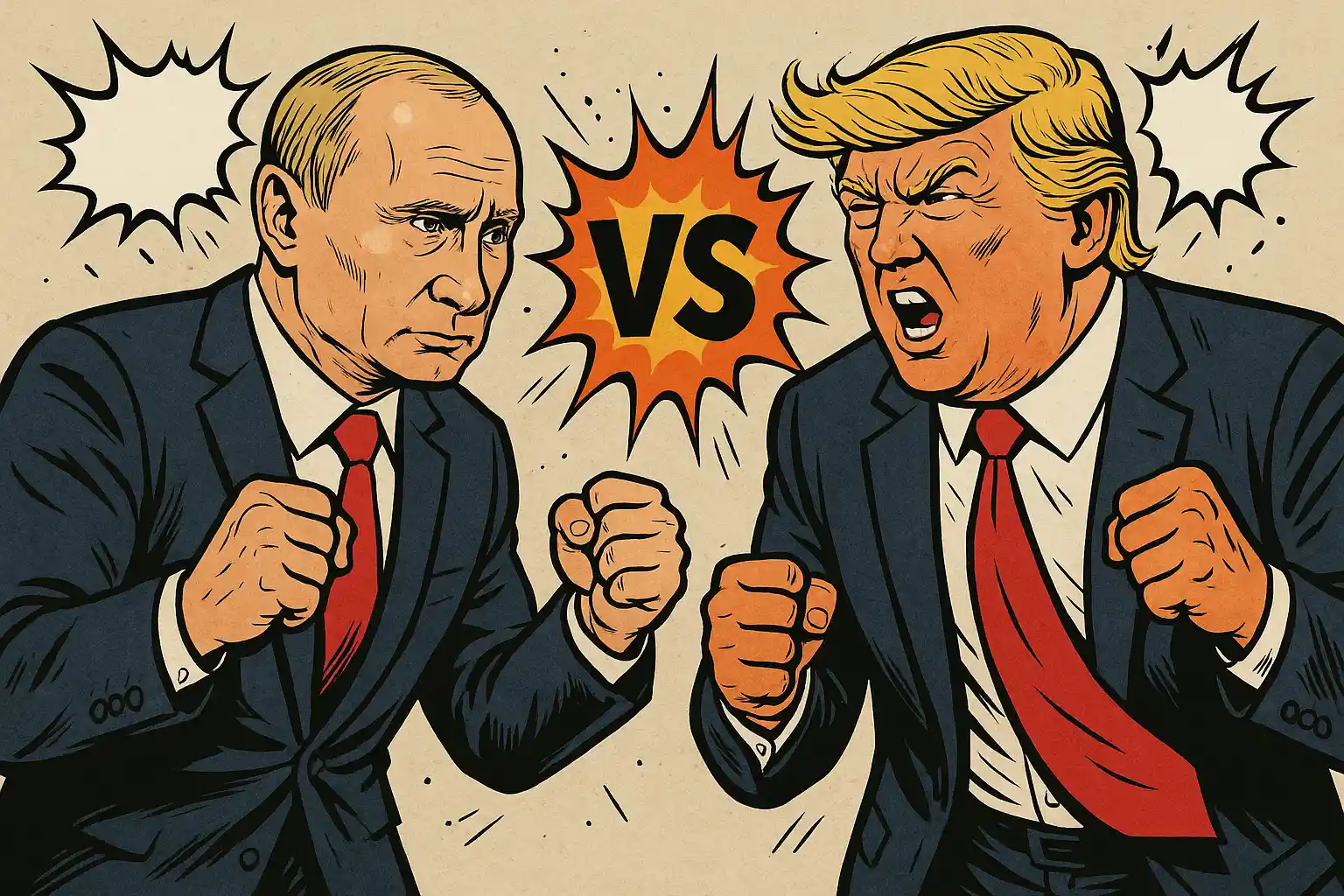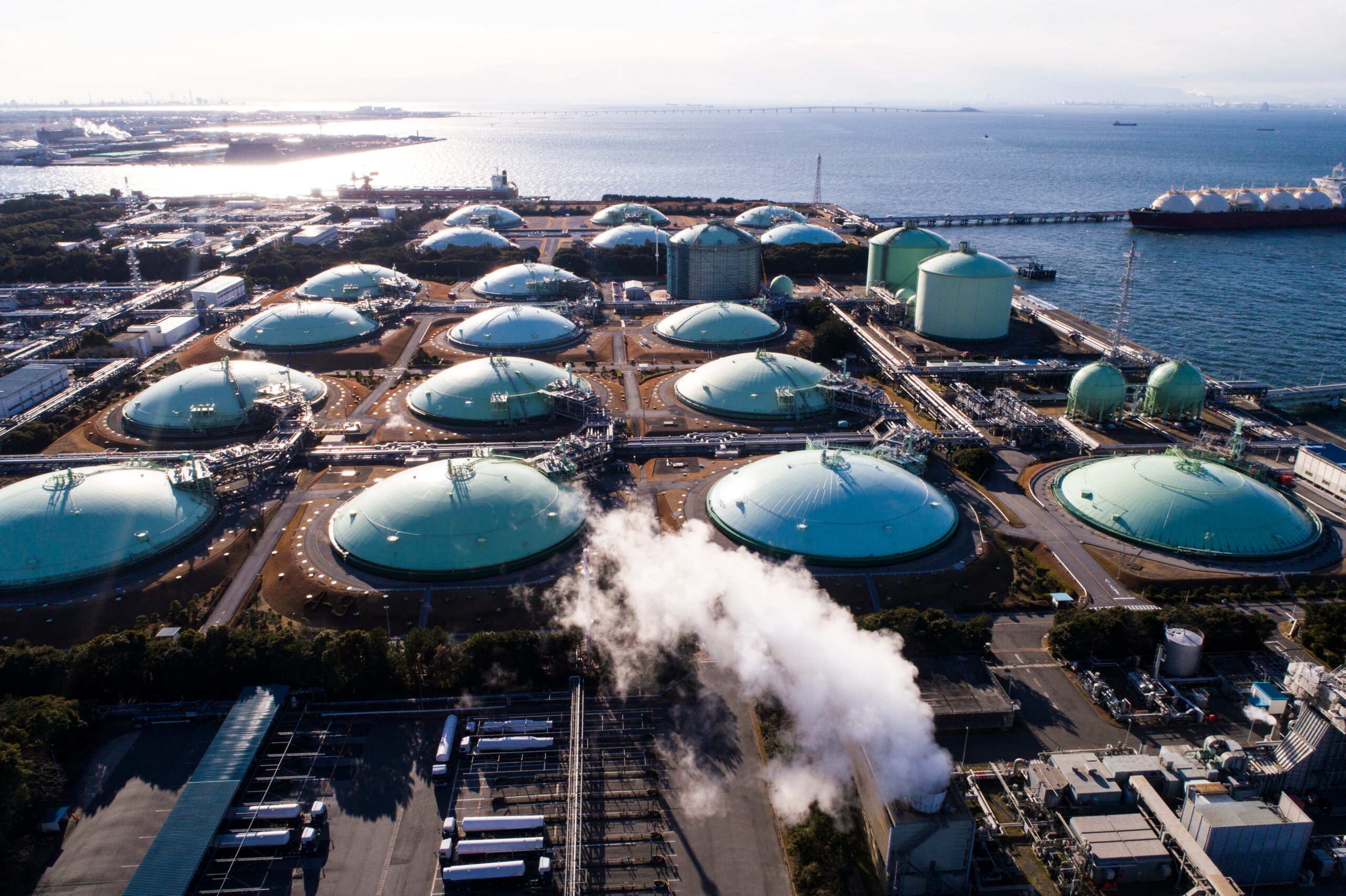
Trump and Putin Begin Alaska Summit to Negotiate Ukraine War End as Markets Brace for Volatility
Alaska Summit: Markets Brace for Diplomatic Gamble That Could Reshape Global Order
ANCHORAGE, Alaska — In the stark military confines of Joint Base Elmendorf-Richardson, two men whose decisions have shaped global markets for the better part of two decades are about to sit across from each other with the weight of a three-year conflict—and trillions in market valuations—hanging in the balance.

At precisely 11:30 a.m. local time today, President Donald Trump and Russian President Vladimir Putin will commence their first direct meeting since Trump's return to the White House, marking what financial markets are treating as the highest-stakes diplomatic event since the 2008 financial crisis. The summit, focused primarily on negotiating an end to the Ukraine conflict, arrives as global investors grapple with unprecedented uncertainty across energy, defense, and currency markets.
Player's Positions
| Party | Key Positions |
|---|---|
| United States (Trump) | - Seeks a ceasefire/freeze in Ukraine, possibly an "air truce" (halt to aerial bombings). - Open to limited territorial concessions but walked back earlier land-swap suggestions. - Framing summit as a "listening exercise" with a 25% chance of failure. - Hints at a follow-up trilateral meeting with Ukraine. - May leverage tariffs on buyers of Russian crude as economic pressure. - Aims for optics of de-escalation ahead of U.S. political cycle. |
| Russia (Putin) | - Seeks symbolic diplomatic win by engaging the U.S. directly (without Ukraine). - Floats a nuclear arms accord to broaden negotiation leverage. - Unlikely to concede major territory but may accept a frozen conflict with current frontlines. - Wants sanctions relief but recognizes EU constraints. - Testing U.S.-EU cohesion. |
| Ukraine (Zelenskyy) | - Excluded from summit, rejects any deal made without Kyiv ("dead decisions"). - Opposes territorial concessions or ceasefire that locks in Russian gains. - Demands security guarantees and NATO/EU integration. - Open to future trilateral talks if U.S. insists. |
| European Allies | - Skeptical of backroom deals between U.S. and Russia. - Sanctions relief requires EU unanimity (unlikely without Ukrainian approval). - Fear Trump may pressure Ukraine into unfavorable concessions. - Prefer inclusive negotiations with Kyiv at the table. |
| Market Expectations | - Low expectations for a breakthrough. - Best-case: "Air truce" or temporary ceasefire. - Worst-case: Talks collapse, leading to renewed escalation. - No major sanctions relief expected near-term. |
The exclusion of Ukrainian President Volodymyr Zelenskyy from these talks has already triggered sharp criticism from Kyiv, with the Ukrainian leader dismissing any potential agreements as "dead decisions." Yet for market participants, the absence of Ukraine's voice may paradoxically increase the probability of a near-term ceasefire framework—even if its durability remains questionable.
Did you know that the Geopolitical Risk Premium is an extra cost or expected return that investors demand to compensate for the uncertainties and potential disruptions caused by political instability or conflicts in a region? This premium reflects how markets price the risks from events like wars, sanctions, or political turmoil, often driving up asset yields and commodity prices beyond normal supply-demand factors. As geopolitical tensions ripple through global economies, this premium plays a crucial role in investment decisions and economic forecasting, capturing the hidden cost of political uncertainty in today’s interconnected world.
The Diplomatic Gamble Wall Street Is Watching
Trump has characterized the Alaska meeting as a "listening exercise," acknowledging approximately a 25% probability of outright failure. This candid assessment reflects the complex dynamics at play: Putin's last-minute proposal for a nuclear accord suggests Moscow's willingness to expand negotiations beyond Ukraine, while Trump's team—including Secretary of State Marco Rubio and Treasury Secretary Scott Bessent—signals serious U.S. engagement.
Market analysts are parsing every signal with unusual intensity. The timing of the summit, beginning during the final hour of U.S. trading and extending into options expiry Friday, has created what one senior trader described as "a perfect storm of headline volatility and thin liquidity."

The immediate focus centers on potential ceasefire mechanisms, particularly discussions around an "air truce" that could freeze current battle lines without addressing underlying territorial disputes. Such an arrangement would represent the diplomatic equivalent of a market pause—buying time without resolving fundamental structural issues.
Energy Markets Face Reality Check
For commodity traders, the summit represents a critical inflection point that could reshape energy flows worth hundreds of billions annually. Current market positioning reflects deep skepticism that any Alaska agreement will meaningfully alter sanctions regimes or unlock Russian oil supplies in the near term.
Brent Crude oil prices have shown significant volatility since the start of the Ukraine conflict in 2022, reacting to sanctions and supply disruptions.
| Date | Brent Crude Oil Price (USD per barrel) | Notable Events |
|---|---|---|
| January 2022 | ~$91 | Pre-conflict tensions and tightening supply contribute to rising prices. |
| June 2022 | ~$109 | Prices surge following the invasion of Ukraine and subsequent sanctions on Russia. |
| December 2022 | ~$85 | Prices decline from their peaks due to concerns about a global economic slowdown. |
| December 2023 | ~$78 | Continued OPEC+ production cuts and geopolitical tensions lead to ongoing price fluctuations. |
| August 2025 | ~$66 | Prices are lower amid forecasts of a global oil surplus. |
Brent crude futures have shown muted reaction to summit developments, with energy analysts noting that meaningful sanctions relief would require extensive European Union coordination—a process that could take months even under the most optimistic scenarios. The disconnect between diplomatic headlines and actual barrel flows has created what some describe as a "reality premium" in oil markets.
One senior energy strategist, speaking on condition of anonymity, noted that "the market has learned to distinguish between summit optics and sanctions mechanics. Even a preliminary ceasefire doesn't change the fundamental legal frameworks constraining Russian energy exports."
The broader implications extend beyond immediate price movements. European nations, particularly those heavily dependent on alternative energy sources since 2022, face complex calculations about potential supply normalization. German industrial futures, heavily correlated with energy cost projections, have shown unusual volatility as traders attempt to price various Alaska outcomes.

Defense Sector Recalibrates Amid Peace Rhetoric
Perhaps no sector embodies the summit's market complexity more than aerospace and defense. The iShares U.S. Aerospace & Defense ETF, trading down 0.88% to $195.99 as talks commenced, reflects investor uncertainty about how peace negotiations might affect multi-year rearmament cycles.
Performance Summary of Major U.S. Aerospace & Defense ETFs Over the Past Three Years (2022–2025 YTD)
| ETF Symbol | 2022 Annual Return | 2023 Annual Return | 2024 Annual Return | 2025 YTD Return (as of Aug) | Approx. 3-Year Total Return | Notes |
|---|---|---|---|---|---|---|
| ITA | +9.96% | +14.33% | +15.81% | +30.31% | ~40–43% | iShares U.S. Aerospace & Defense ETF; strong gains aligned with rising defense budgets and global conflicts |
| XAR | N/A | N/A | N/A | N/A | 24.69% | SPDR S&P Aerospace & Defense ETF; solid 3-year return reflecting sector strength |
Note: 2025 returns are year-to-date as of August 2025. ITA shows consistent annual growth with a strong 2025 performance, while XAR’s 3-year return reflects steady sector interest.
Defense industry analysts emphasize that structural NATO and European defense spending commitments remain largely insulated from short-term diplomatic developments. The three-year conflict has fundamentally altered European defense planning, creating procurement cycles that extend well beyond any potential Ukraine resolution.
Military contractors with significant European exposure are particularly focused on how any Alaska framework might affect long-term defense partnerships. The possibility of reduced immediate conflict intensity could paradoxically accelerate certain defense modernization programs as nations seek to prevent future conflicts through deterrence capabilities.
Currency Markets Navigate Diplomatic Uncertainty
Foreign exchange traders are positioning for extreme volatility as the summit progresses. The U.S. dollar initially weakened on risk-on sentiment surrounding peace talks, but analysts caution that currency moves could reverse quickly if summit outcomes disappoint market expectations.
European currency performance reflects the continent's complex position in any potential agreement. The euro faces particular sensitivity to summit developments, given European nations' significant role in sanctions enforcement and reconstruction financing. Any framework requiring sustained European diplomatic coordination could strengthen the euro through increased regional importance, while failure could trigger risk-off flows.
Central bank watchers note that successful peace negotiations could complicate monetary policy calculations by reducing geopolitical risk premiums while potentially altering inflation dynamics through changed energy and commodity flows.
Investment Implications Beyond the Headlines
For institutional investors, the Alaska summit crystallizes broader questions about geopolitical risk pricing in portfolio construction. The conflict's duration has created what some describe as "war-economy valuations" across multiple sectors, from agriculture to technology supply chains.
Did you know that "War-Economy Valuations" refer to the economic assessments made when a country's resources and industries are redirected to support wartime efforts? In a war economy, governments prioritize military production, shift labor and materials away from civilian goods, and often increase control over the economy through measures like rationing and war bonds. These valuations help understand how such shifts impact overall economic performance, asset values, and government finances during times of conflict, highlighting the significant transformation economies undergo to sustain war efforts and their lasting effects on post-war recovery.
Portfolio managers are particularly focused on how any ceasefire framework might affect long-term energy transition investments. European renewable energy projects, accelerated by supply security concerns, could face different economic calculations under normalized energy trade scenarios.
The summit also highlights the interconnected nature of modern geopolitical and market risks. Bitcoin and other alternative stores of value have shown increased correlation with summit developments, reflecting investor uncertainty about traditional monetary and diplomatic frameworks.
Strategic Positioning in an Uncertain Landscape
Market participants are adopting increasingly sophisticated hedging strategies to navigate summit-related volatility. Options markets show elevated demand for both upside and downside protection, with particular focus on energy and defense sector exposures.
Professional investors are emphasizing flexibility over directional bets, with many preferring liquid instruments that allow rapid position adjustments as diplomatic developments unfold. The lesson from previous geopolitical events suggests that initial market reactions often prove temporary, with longer-term positioning depending on implementation details rather than headline announcements.
The Alaska summit ultimately represents more than a diplomatic event—it's a stress test for markets that have adapted to prolonged conflict conditions. Whether Trump and Putin can craft a framework that satisfies both immediate market expectations and longer-term stability requirements remains the trillion-dollar question facing global investors.
As talks continue into the evening hours, market participants worldwide will be parsing not just what agreements emerge, but how quickly theoretical frameworks can translate into measurable changes in energy flows, defense spending, and the broader architecture of international economic relationships that have defined the post-2022 global order.
Markets remain open and volatile as diplomatic developments continue to unfold throughout Asian and European trading sessions.